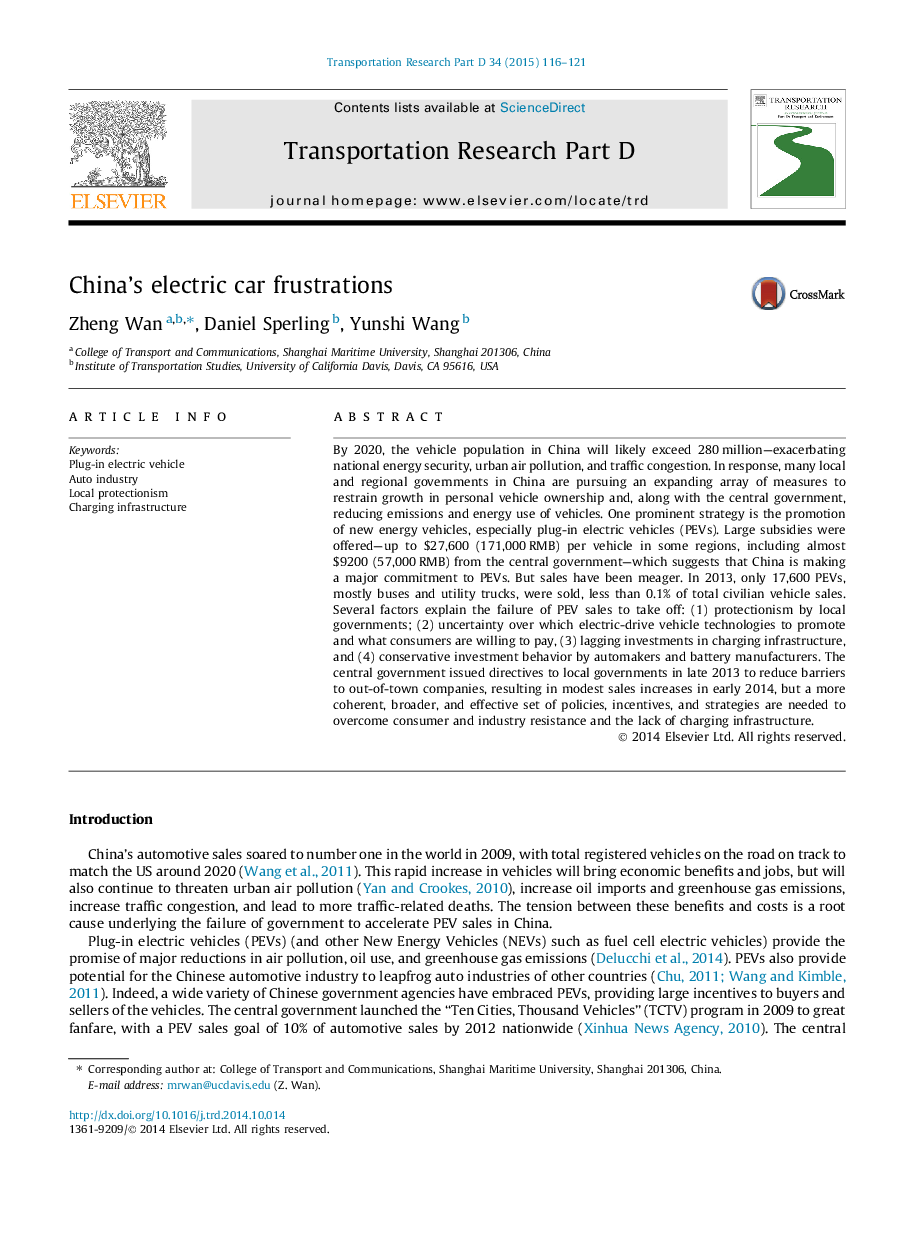| Article ID | Journal | Published Year | Pages | File Type |
|---|---|---|---|---|
| 7500650 | Transportation Research Part D: Transport and Environment | 2015 | 6 Pages |
Abstract
By 2020, the vehicle population in China will likely exceed 280Â million-exacerbating national energy security, urban air pollution, and traffic congestion. In response, many local and regional governments in China are pursuing an expanding array of measures to restrain growth in personal vehicle ownership and, along with the central government, reducing emissions and energy use of vehicles. One prominent strategy is the promotion of new energy vehicles, especially plug-in electric vehicles (PEVs). Large subsidies were offered-up to $27,600 (171,000Â RMB) per vehicle in some regions, including almost $9200 (57,000Â RMB) from the central government-which suggests that China is making a major commitment to PEVs. But sales have been meager. In 2013, only 17,600 PEVs, mostly buses and utility trucks, were sold, less than 0.1% of total civilian vehicle sales. Several factors explain the failure of PEV sales to take off: (1) protectionism by local governments; (2) uncertainty over which electric-drive vehicle technologies to promote and what consumers are willing to pay, (3) lagging investments in charging infrastructure, and (4) conservative investment behavior by automakers and battery manufacturers. The central government issued directives to local governments in late 2013 to reduce barriers to out-of-town companies, resulting in modest sales increases in early 2014, but a more coherent, broader, and effective set of policies, incentives, and strategies are needed to overcome consumer and industry resistance and the lack of charging infrastructure.
Related Topics
Life Sciences
Environmental Science
Environmental Science (General)
Authors
Zheng Wan, Daniel Sperling, Yunshi Wang,
